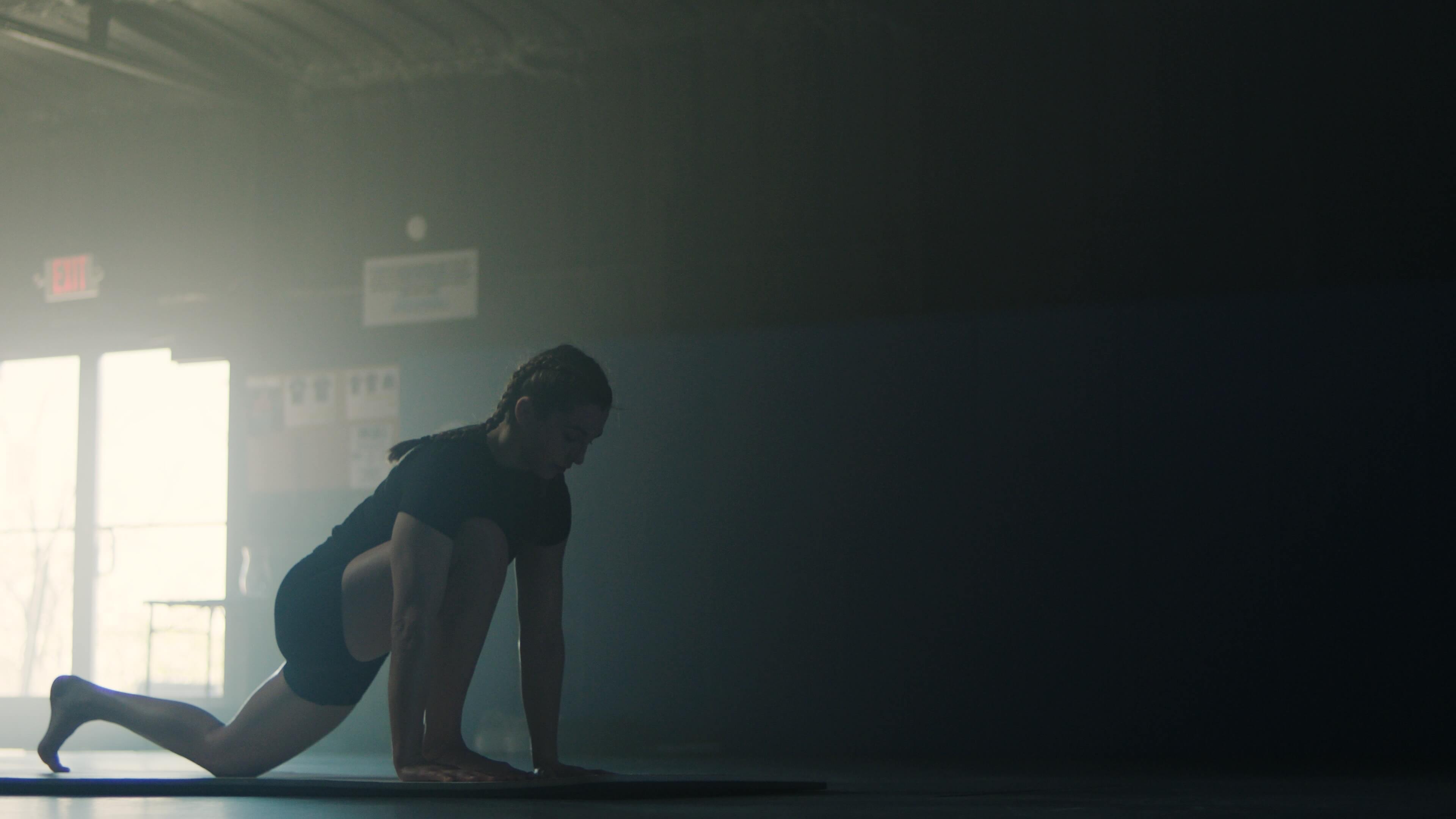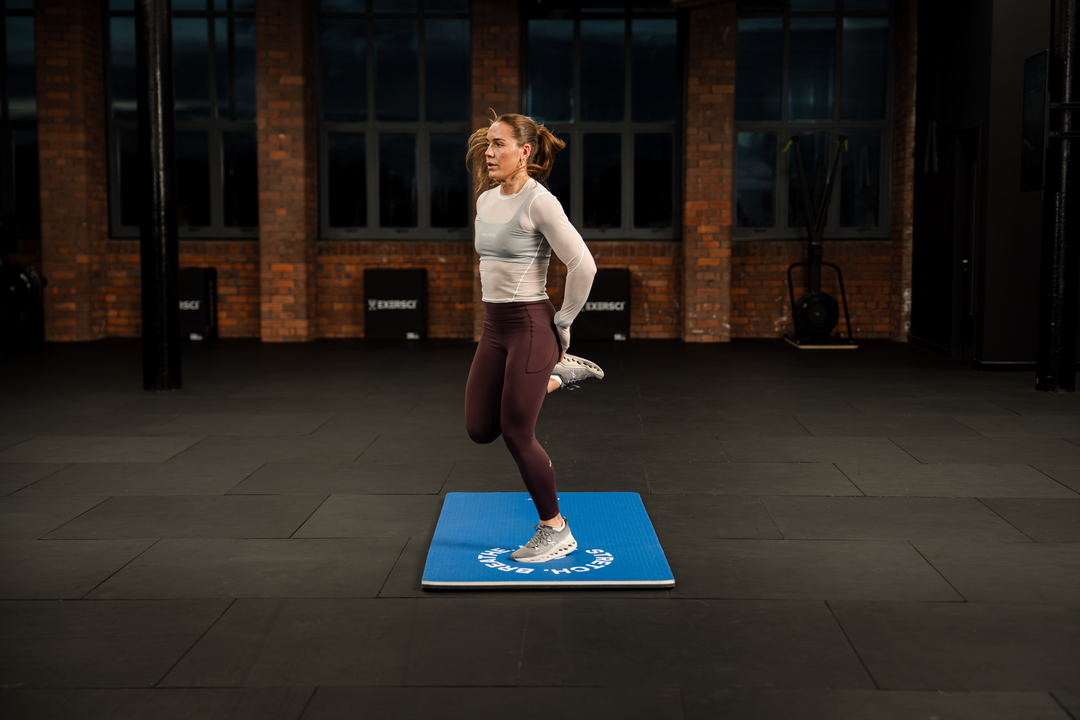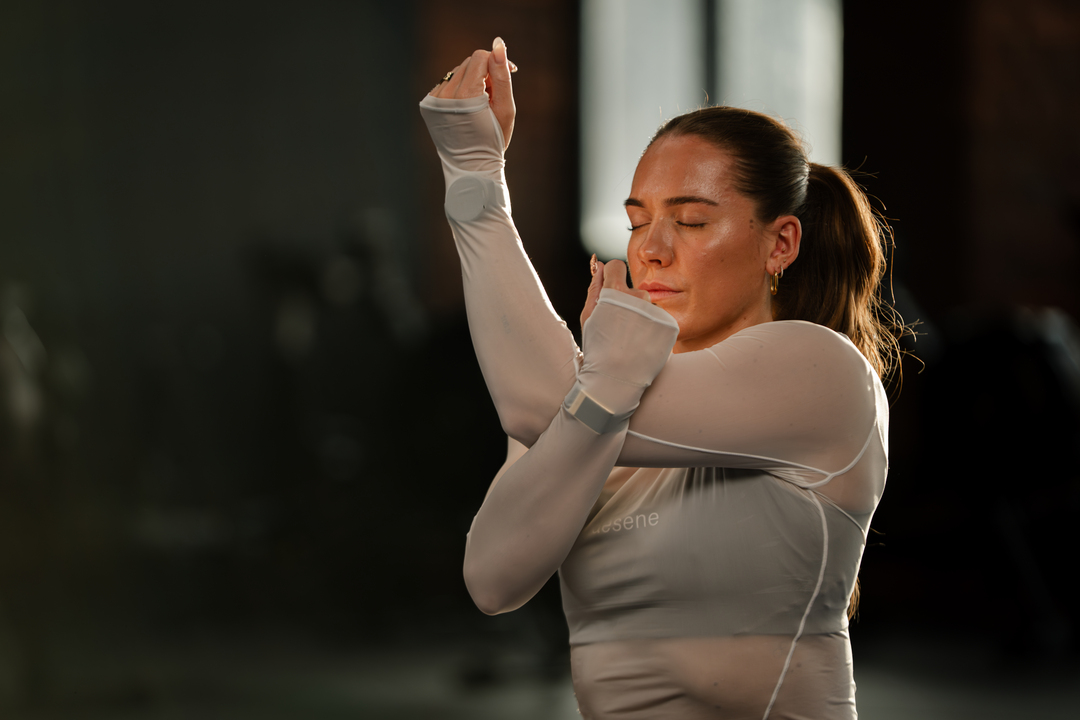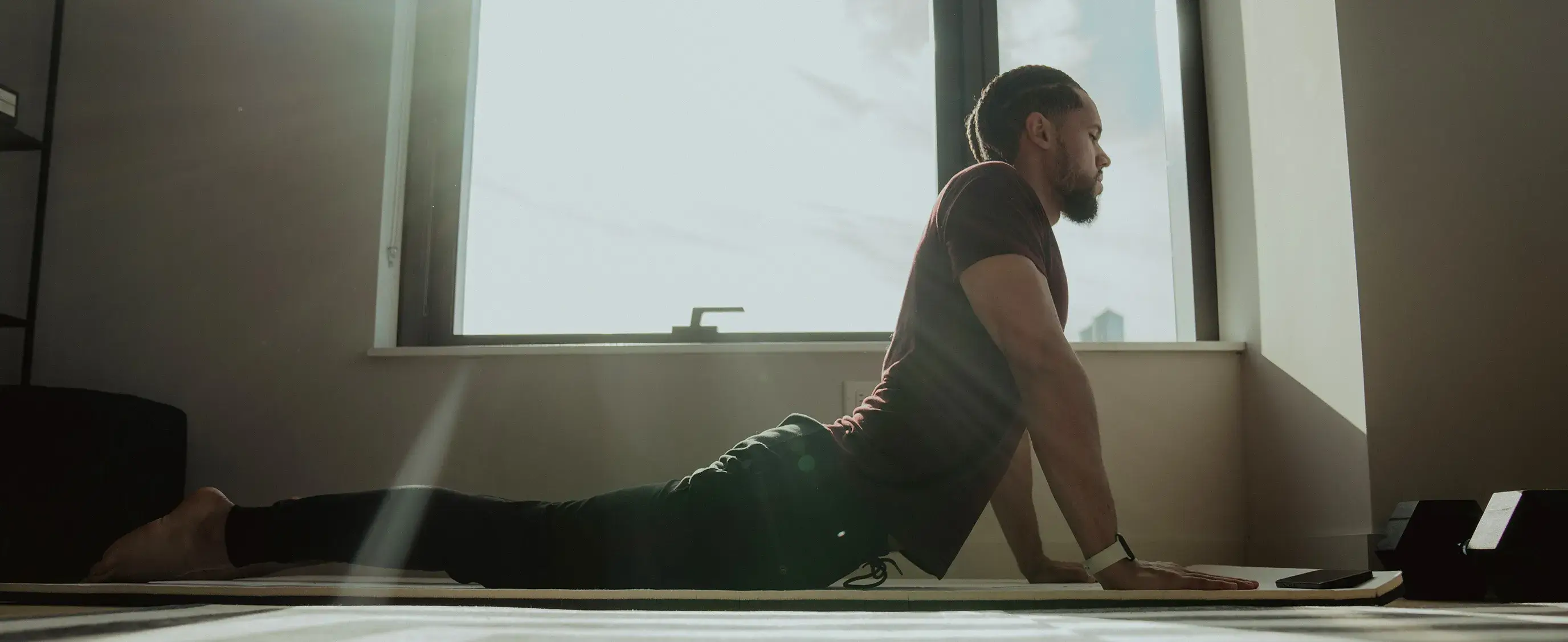Flexibility training offers many benefits, yet it can be easy to overlook. Daily life, sports, and exercise can create rigid muscles and connective tissues that hinder performance, movement, and recovery. For example, say you’re gearing up for a run. You start to warm up and feel tightness in your hips, hamstrings, and calves. Instead of jumping into your run and hoping for the best, a better approach is to perform a flexibility exercises routine to relieve this tightness before you run. This blog will help you understand the ins and outs of flexibility routines to move quickly, stay pain-free, and maintain a strong, flexible body that supports an active lifestyle.
One of the best ways to relieve tight muscles and improve your performance is through Pliability’s mobility app, which acts as an interactive flexibility routine, guiding you through easy-to-follow protocols targeting your problem areas.
Why Have a Daily Full-Body Flexibility Routine?
-min.jpeg)
It doesn’t matter your age, experience level, or training discipline as an athlete. Incorporating a full-body flexibility program into your routine will help build a strong foundation for improving your biomechanics, reducing the risk of injury. It will help maximize your athletic performance and exercise output in training.
Stretching Improves Your Mobility
While flexibility and mobility are distinctly different, the flexibility gained from static stretching is a powerful tool that fits into the overall puzzle of maximizing mobility. Your body’s biomechanics and muscular systems are a complex network comprised of individual components, each having direct and indirect effects on your body's movement.
As an example, paint a picture. It may seem odd to think that immobility, inflexibility, or improper range of motion in your feet and legs could be the origin of back and neck pain. But everything in your body’s interconnected network can cause chain reactions affecting biomechanics and tension multiple steps down the chain of human motion.
The Importance of a Consistent Full-Body Stretching Routine
A well-rounded stretching routine that considers your most used muscle groups (especially those most likely out of balance from our modern lifestyles) is a worthwhile investment that minimizes the chances of slight imbalances gradually developing into more significant problems. Getting in tune with your range of motion and muscle flexibility across your entire body also allows you to understand better how your body reacts to your current training program and lifestyle.
Recognizing changes from day to day in how tension develops in your body makes it much easier to identify what changes may have positive or negative impacts on different aspects of your biomechanics. All of that starts with a simple, consistent full-body stretching program.
Stretching is a Healthy Habit You Can Integrate Into Your Life
If you want something to be consistent, you need to integrate it into your life in a way that transforms it into a habit. Selecting when to perform your stretching routine during the day should be based on how likely you will be able to carve out that time each day in your regular schedule. Some people like to stretch first thing in the morning to loosen up muscle tightness that may develop while they sleep.
Others prefer to find a time near the end of the day to wind down and identify tension that may have been created. Whichever is best for you, the most essential factor is to find a regular habit in your current daily ritual to link it to. If you’re a morning person, that might mean, “I can’t make my morning coffee until I complete my stretching.” Or, if you’re an evening person, that might mean, “I can only watch my favorite nightly TV show if I complete my stretching program beforehand.” (Or during!)
Three Key Benefits of Daily Stretching
1. Greater Flexibility
Flexibility is integral to a healthy and mobile body. Flexible muscles allow you to perform better daily and reduce the risk of injury.
Inflexible muscles often pull your body out of its natural alignment and then force it to use compensation patterns to perform when mobility is not sufficient.
2. Perfected Posture
Stretching can help reverse long-term bad postural habits, particularly for those of us spending most of our day sitting down. The most common postural types are kyphosis and hyperlordosis. Kyphosis is a hunchback posture which shortens the chest muscles. Stretching through the chest and shoulders will help.
Hyperlordosis (also known as swayback) is an excessive curve inward of the lower back, requiring you to stretch tighter back muscles. Bad posture is one of the best incentives to stretch. If you fix alignment, your body will move and feel better. Your workouts will become more effective because you can now easily access the muscles needed to optimize training.
3. Improved Recovery
Stretching consistently increases blood flow to muscles, quickens recovery time, and reduces the dreaded post-workout DOMS (delayed onset muscle soreness). After a workout, use static stretches, holding them in position for 10 to 30 seconds. And be sure you’re always working comfortably to avoid overstretching.
Related Reading
- Why Is Flexibility Important
- Does Flexibility Increase Speed
- Can Anyone Become Flexible
- Does Stretching Make You More Flexible
- Why Is Flexibility Important for Team Sports
- Increase Back Flexibility
- How Long Does It Take to Get Flexible
- Which Activity Is a Type of Flexibility Exercise?
- Sports That Require Flexibility
- What Is the Best Strategy to Improve Flexibility in Your Legs and Back
- Mobility vs Flexibility
- Sports That Require Flexibility
How to Make a Flexibility Routine
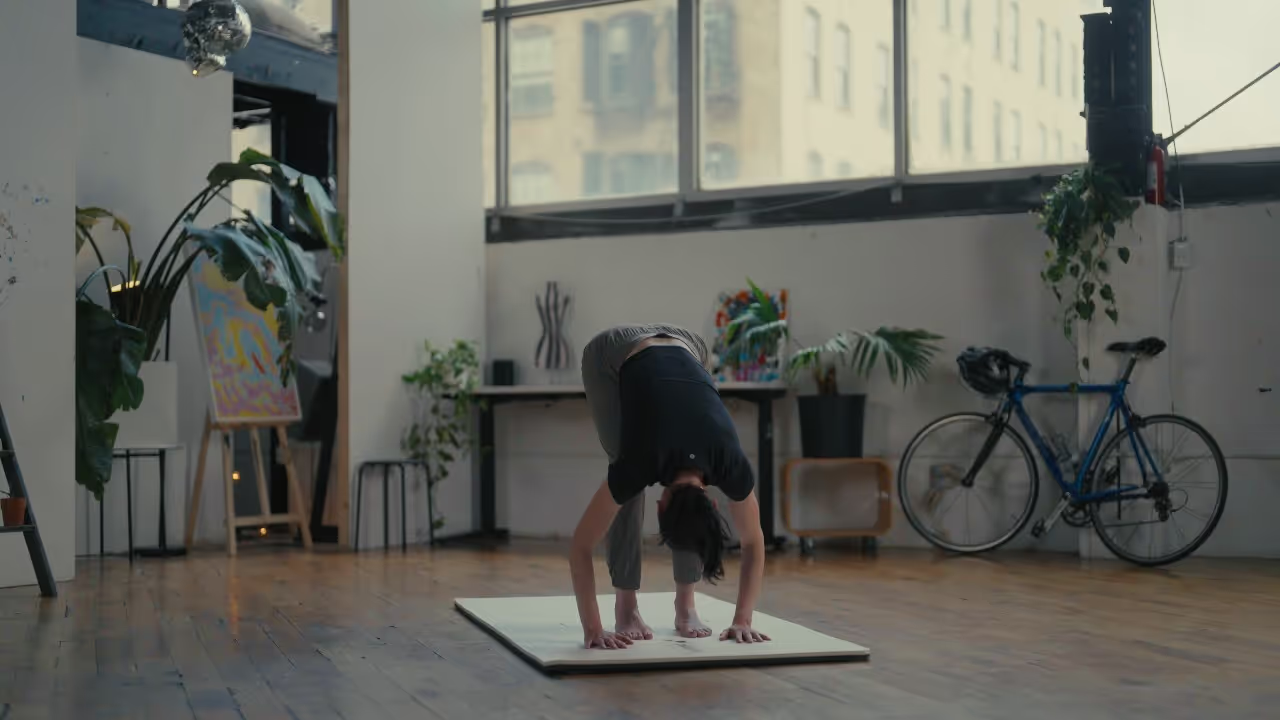
Creating a flexible routine for you can help avoid injuries and improve performance. Use the steps below to design your personalized stretching plan.
Target Your Needs
Flexibility routines can vary widely, so it’s essential to personalize your plan to suit your needs.
- Think about why you want to improve your flexibility.
- Are you recovering from an injury?
- Trying to prevent muscle soreness?
- Looking to perform better in sports?
Each goal may benefit from different stretching routines, so target your needs to choose the proper stretches. Consider your current level of flexibility and any tight areas that need extra attention. For example, if you’re a runner with tight hamstrings, completing a routine for flexibility in the hamstrings can help you avoid injury.
Assess your activity level and how your flexibility routine can improve your performance in a particular sport or exercise. If you return to running after an injury, a flexibility routine targeting the hips can aid recovery and improve your running performance.
Create a Schedule
Now that you have identified your goals, it’s time to create a schedule for your flexibility routine. You can perform stretching exercises daily, a few times per week, or before and after physical activity. If you are recovering from an injury, speak to your doctor or physical therapist about structuring your routine for optimal recovery. They can help you identify your goals and plan to meet them safely.
Choose Your Stretches
It’s time to select the stretches that will best meet your needs. Start by targeting any areas of tightness that could benefit from improved flexibility.
Look for stretching routines that align with your goals. For example, if you’re returning to running after an injury, find routines that focus on improving flexibility in the muscles and connective tissues that support your running performance.
Track Your Progress
As with any new routine, it helps to track your progress when starting a stretching plan. This can help keep you motivated and allow you to adjust your routine as needed.
Use a notebook or app to record your flexibility goals, daily performance, and any changes you notice. For example, you can perform a stretch with better form, hold the position for a longer duration, or complete a routine with fewer repetitions.
Stay Consistent
Remember that improving flexibility takes time and consistency. Aim to stick with your routine for at least a month before expecting to see significant changes.
Related Reading
- Why Is It Important for Athletes to Be Flexible
- Flexibility Sports Examples
- How Many Days Per Week Can You Perform Flexibility Exercises?
- How to Become Flexible if You Are Very Stiff
- Flexibility Exercises for Kids
- Flexibility Exercises at Home
- How Can Flexibility Training Reduce the Risk of Back Pain?
- Flexibility Exercises for Beginners
- How Frequently Should Flexibility Exercises Be Performed for Best Results?
- Benefits of Flexibility
- Flexibility Workout Plan
- Types of Flexibility Exercises
- Back Stretches for Flexibility
- Strength and Flexibility Training
- Exercises for Lower Back Pain
- How to Stretch Quads
- Morning Stretch
- Best Quad Stretches
- At What Average Age Does Flexibility Start to Diminish for Most People?
- IT Band Stretches
- IT Band Stretch
- IT Band Exercises
- Inner Thigh Stretches
- Cool Down Stretches
- Standing Quad Stretch
The Ultimate Full-Body Stretching Routine
.jpeg)
1. Lower Back Stretching Routine: Get Started with the Right Approach
The full-body stretching routine begins with a double knee-to-chest stretch that targets the lower back. This stretch helps alleviate tension in the erector spinae and other supporting muscles. Lessening tightness in these muscles improves flexibility and reduces the risk of injury before physical activity.
Exercise Name: Double Knee to Chest Stretch
Muscles Targeted: Erector spinae, latissimus dorsi, gluteus medius, gluteus minimus, gluteus maximus
Reps & Hold Time: 2-4 Reps x 15-30 Seconds
2. Upper Back Stretching Routine: Targeting Supporting Muscle Groups
The routine transitions to stretching the upper back. The child’s pose is an excellent stretch for enhancing flexibility in the upper back (thoracic spine). This stretch also targets the core and hips, making it an essential precursor to other upper back stretches.
Exercise Name: Child’s Pose
Muscles Targeted: Rectus abdominis, iliopsoas, latissimus dorsi, trapezius, serratus anterior, deltoids, gluteus maximus
Reps & Hold Time: 2-4 Reps x 15-30 Seconds
3. Oblique and Core Flexibility Routine: A Critical Component of Upper Body Mobility
Before moving to upper body stretches, it helps to target the obliques and core. In addition to improving performance in athletic pursuits, enhancing flexibility in these muscle groups can alleviate pressure on the spine and reduce the risk of injury. The next stretch in this routine is the lying bent-leg oblique stretch.
Exercise Name: Lying Bent-Leg Oblique Stretch
Muscles Targeted: Obliques, transversus abdominis, erector spinae, anterior serratus muscles
Reps & Hold Time: 2-4 Reps x 15-30 Seconds
4. Arm Flexibility Routine: Improving Mobility of the Upper Body
The routine can now target the arms and shoulders. First, the upper trapezius stretch. Tightness in the upper trapezius can limit shoulder mobility and contribute to pain and discomfort in the neck and upper back.
Exercise Name: Upper Trapezius Stretch
Muscles Targeted: Trapezius, sternocleidomastoid, splenius capitis, semispinalis capitis, deltoids
Reps & Hold Time: 2-4 Reps x 15-30 Seconds
5. Glute Flexibility Routine: Enhancing Range of Motion in the Hips
Next, the routine transitions to the glutes and hips. The psoas glute bridge stretch targets the glutes and hip flexors to improve flexibility and function. This stretch is particularly effective for relieving tension in the hip flexors that can limit glute flexibility and performance.
Exercise Name: Psoas Glute Bridge Stretch
Muscles Targeted: Iliacus, psoas major, psoas minor, hip flexors, gluteus maximus, hamstrings
Reps & Hold Time: 2-4 Reps x 15-30 Seconds
6. Calf Flexibility Routine: Preparing for Lower Body Stretches
The full-body stretching routine now transitions to the calves. The door frame squat stretch is an excellent dynamic stretch for preparing the calves, hamstrings, glutes, and quadriceps for enhanced flexibility.
Exercise Name: Doorway Squat Stretch
Muscles Targeted: Gluteus maximus, gluteus medius, gluteus minimus, hip flexors, adductors, hamstrings, quadriceps, rectus abdominis, erector spinae
Reps & Hold Time: 2-4 Reps x 15-30 Seconds
7. Hamstring Flexibility Routine: Enhancing Lower Body Performance
The routine now shifts to stretching the hamstrings. First, the lying hamstring stretch can be performed with a strap to help isolate the muscle group and improve flexibility.
Exercise Name: Lying Hamstring Stretch
Muscles Targeted: Hamstrings, hip flexors, calves
Reps & Hold Time: 2-4 Reps x 15-30 Seconds
8. Anterior Tibialis Flexibility Routine: Targeting the Shins
The routine now transitions to stretching the anterior tibialis on the front of the lower leg. The kneeling shin stretch targets the tibialis anterior and can help improve flexibility and reduce the risk of injury.
Exercise Name: Kneeling Shin Stretch
Muscles Targeted: Tibialis Anterior, Quadriceps
Reps & Hold Time: 2-4 Reps x 15-30 Seconds
9. Quadriceps Flexibility Routine: Completing the Lower Body Routine
The full-body stretching routine concludes with a series of stretches for the quadriceps. First, the lying quad stretch can target the quadriceps and hip flexors.
Exercise Name: Lying Quad Stretch
Muscles Targeted: Rectus femoris, vastus lateralis, vastus medialis, vastus intermedius
Reps & Hold Time: 2-4 Reps x 15-30 Seconds
Related Reading
- Leg Flexibility Exercises
- Muscular Flexibility Exercises
- Pliability vs Flexibility
- Flexibility Workout
- Best Stretches for Flexibility
- Best Flexibility Apps
- StretchIt vs Pliability
- Bend vs Stretchit
- Bend App Alternative
- Band Stretches
- Side Stretches
- Stretches for Sore Legs
Improve Your Flexibility with Our Mobility App Today | Get 7 Days for Free on Any Platform
Pliability offers a fresh take on yoga tailored for performance-oriented individuals and athletes. Our app features a vast library of high-quality videos designed to:
- Improve flexibility
- Aid recovery
- Reduce pain
- Enhance range of motion
Personalized Mobility Solutions
Pliability provides daily-updated custom mobility programs for those interested in optimizing their health and fitness. It also includes a unique body-scanning feature to pinpoint mobility issues. If you're feeling limited by pain or the ability to move, Pliability aims to complement your fitness routine and help you move better.
Sign up today for 7 days absolutely for free, on iPhone, iPad, Android, or on our website to improve flexibility, aid recovery, reduce pain, and enhance range of motion with our mobility app.
